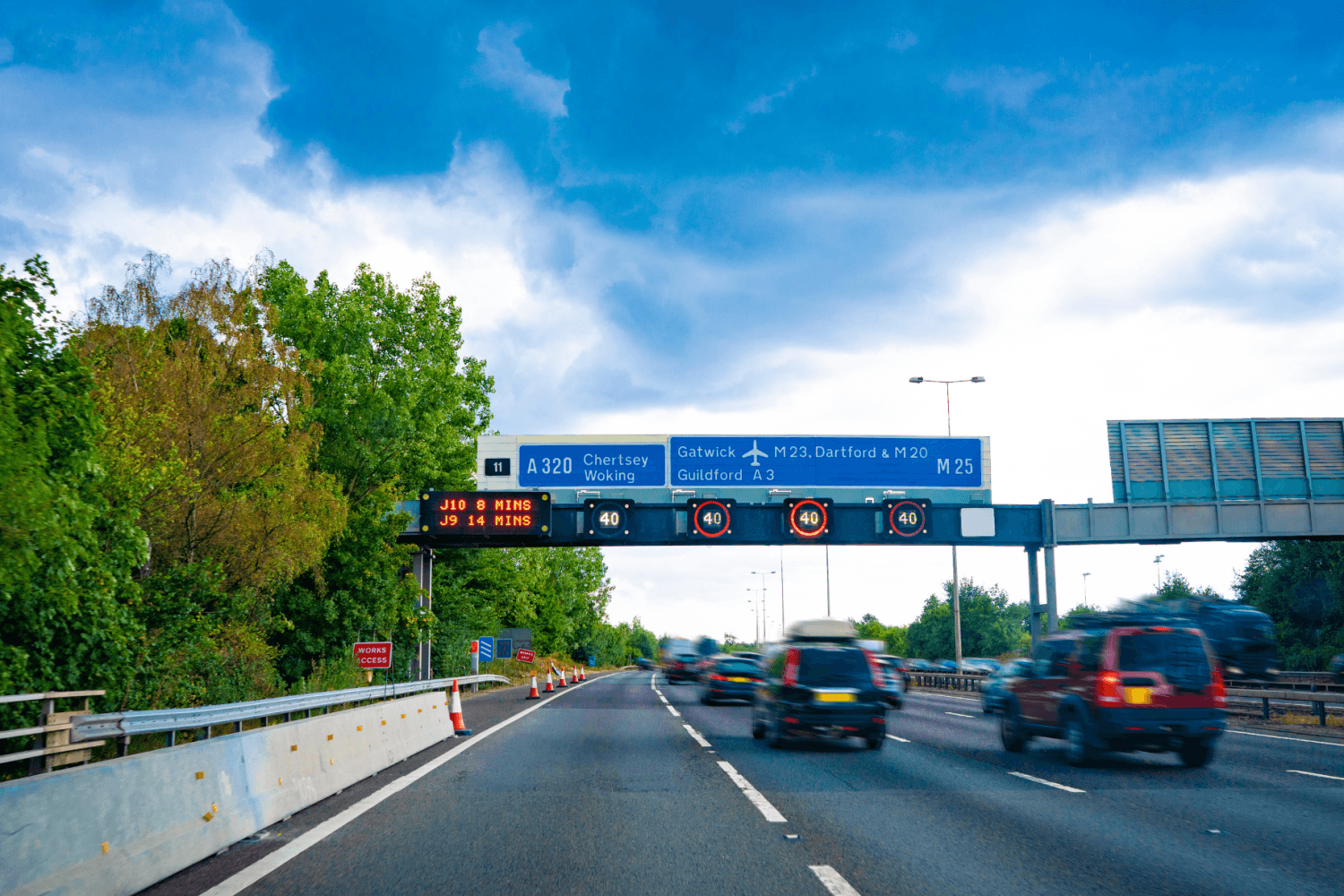Smart motorways certainly divide opinion among drivers and government ministers. With the first smart motorway trialled in 2006, all plans for new smart motorways have now been cancelled. Despite the fact that around 10% of the UK’s motorway network is made up of smart motorways, many people still don’t know what a smart motorway is and how they differ from a ‘normal’ motorway. In this article, we’ll cover everything you need to know about smart motorways, where they are and the rules you need to follow when using them.
What is a smart motorway?
In short, a section of motorway that uses various traffic management. One of the key differences to a normal motorway is in how Highways England have changed the use of the hard shoulder to become an active running lane. Three schemes were designed which can be classed as a smart motorway.
The 3 types of schemes defined as a smart motorway
The three current types of smart motorway are defined as controlled motorways, all lane running schemes and dynamic hard shoulder running schemes.
What this means for all lane running schemes is that the hard shoulder has been permanently removed to provide an additional lane for traffic. Controlled motorways also have a permanent hard shoulder, but with variable traffic controls to speed up or slow down traffic. Dynamic hard shoulder running schemes retain the hard shoulder, but allow it to be used as a running lane when congestion is high. The latter is what currently has created division over confusion where and when to use the hard shoulder as a place for broken down vehicles or for live traffic.
So, when do I not use the hard shoulder?
A dynamic feature of smart motorways is a red ‘X’ sign. This indicates to traffic not to use the hard shoulder in any of the three schemes. You’ll usually see these in overhead gantries or cantilever signs on the edge of the road. Emergency refuge areas (ERAs) have also been rolled out every 1.5 miles on every smart motorway. These are areas painted in orange to help drivers spot them, and usually have signs advising drivers when the next ERA is. There is also signage on the variable controlled motorways that advise drivers when to slow down or speed up.
What if I break down away from an ERA?
If you stop in the nearside lane, switch on your hazard lights and always try to exit the vehicle from the left where possible and head to the nearest safety barrier to stand behind. There are usually SOS boxes to help you contact emergency rescue services in an ERA zone. If you cannot safely exit your vehicle, contact 999 immediately. As the variable speed limits are controlled by cameras, you can rest assured knowing that due to their technology, incidents can be detected by slowing traffic that does not follow the variable speed limit. Smart cameras have a 10 second delay which helps them detect this using MIDAS technology.
What is the aim of smart motorways?
Highways England developed smart motorways as a concept to manage traffic in a way that reduces the environmental impact of motorways, as well as the time and costs needed to construct new lanes. Safety is a key feature of smart motorways, and despite the bad press received and initial reservations about removing hard shoulders, they have led to reduced accidents with variable speed controls and red X’s.
Are the rules different to ‘normal' motorways?
Most of the normal rules on motorways apply on smart motorways. However, with more cameras and variable speed limits, motorists have a higher chance of being caught out. The national speed limit applies on motorways when a variable speed limit is not in place. Changes to the new speeding sentence structures can result in up to a £2,500 fine. Ignoring the red ‘X’ can also land you an automatic fine between £60-100 and three penalty points.
Where to look out for smart motorways?
Currently, smart motorways exist in the areas mentioned in the below table. However, Government policy outlined in April 2023 that smart motorways will not be built over safety fears expressed by the public over the removal of the hard shoulder as well as for financial reasons.
|
|
All lane running |
Dynamic hard shoulder |
Controlled motorway |
|
M1 |
J16 to J13 J19 to J16 J24 to J25 J28 to J31 J32 to J35a J39 to J4 |
J10 to J13 |
J6a to J10 J23a to 24 J25 to J28 J31 to J32 |
|
M3 |
J2 to 4a |
|
|
|
M4 |
J3 to J12 |
J19 to J20 |
|
|
M5 |
J4 to J6 |
J15 to J17 |
|
|
M6 |
J2 to J4 J10a to J13 J13 to J15 J16 to J19 |
J4 to J10a |
J10a to J11a |
|
M20 |
J3 to J5 |
|
J4 to J7 |
|
M25 |
J5 to J6/7 J23 to J27 |
|
J2 to J3 J7 to J23 |
|
M23 |
J8 to J10 |
|
|
|
M27 |
J4 to J11 |
|
|
|
M42 |
|
|
J7 to J9 |
|
M60 |
|
|
J8 to J18 |
|
M62 |
J10 to J12 J18 to J20 J25 to J26 |
J23 to J30 |
J28 to J29 |
What do you think about smart motorways? Do you think they increase safety or not? Regardless of where you are driving, we can help assist you if you are looking to hire a van or car. Contact us today on 01756 792911 or use our contact form.

